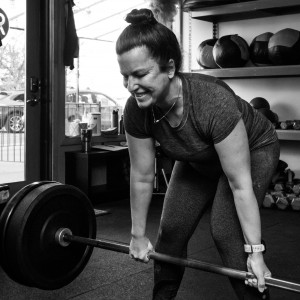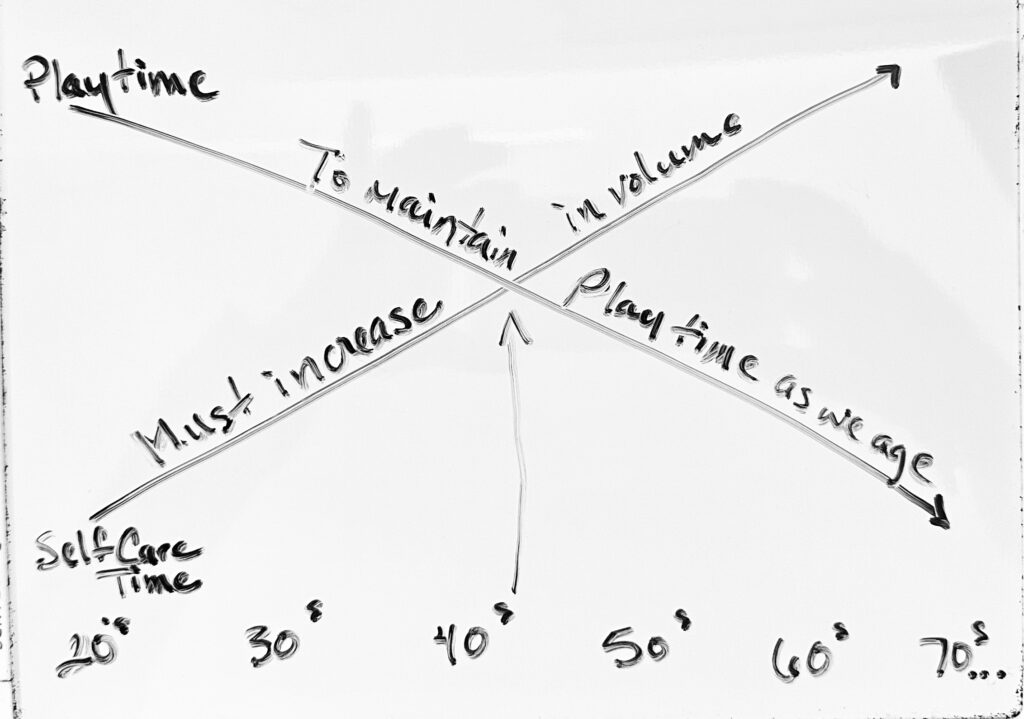Athletic Performance Recovery
The least prioritized facet of training and it should be your top priority.
 The latest from the desk of Carolyn Parker, this educational email is an attempt to touch on the many types of “recovery”. After 30+ years of training and coaching, I can confidently say it is one of the most under utilized aspects of performance enhancement for most recreational athletes. As well, it is under prioritized during return to activity post injury/surgery.
The latest from the desk of Carolyn Parker, this educational email is an attempt to touch on the many types of “recovery”. After 30+ years of training and coaching, I can confidently say it is one of the most under utilized aspects of performance enhancement for most recreational athletes. As well, it is under prioritized during return to activity post injury/surgery.
So then, what is recovery? Recovery is a time for the body to repair and recuperate. It is daily and weekly self care practices. It is prioritizing quality sleep, quality fueling, and time away from technology.
What should we recover from? Training for sport specific races/events or goal achievement, big multi-day efforts on trips and adventures, prolonged stress, injury, surgery, childbirth…anything that takes a deep toll on our body. And let’s not forget we should adjust the amount need as we age.
What does recovery look like and how long does it take? The answer to this is varied of course.
Recovery from Training
Generally speaking, anyone who is actively training for racing events, big mountain adventures, long rides with friends, triathlons, any sort of big picture goal that requires you to prepare (ideally) for many months in advance, should be on a training plan that builds in a recovery week every three to four weeks. A common strategy for most athletes under the age of 50 is to build for three weeks increasing time/distance/load by 10% a week for three weeks (this is called progressive overload) then take a full recovery week dropping training volume by 50%. For athletes over the age of 50 and some under depending on volume of training and life stress this may need to be adjusted to two weeks build one week recovery. And within the training weeks (blocks) there should be at least one rest day and potentially another active rest day. In addition to recovery days and weeks athletes need to plan extra time for self care practices. This is a key and critical piece to keeping us all active and injure free for life, and most often skipped in our busy lives. Self care includes, quality sleep and nutrition, mobility work, massage, acupuncture, chiropractic sessions, time to relax with friends and family.
Additionally, if a specific date (usually the case) is known for the training goal, there should be a significant taper period to the event to deeply recover so the athlete is ready to perform at their peak, taper periods are usually between 7 – 14 days depending on the athlete, the goal, the training load and fatigue on board. After the event there should be a recovery period, this time also varies, depending on how far of a reach or how big an event this was for the athlete. Post event recovery periods can be a week or two or go on for a month or more. For example, coming off big mountain climbs or racing 100+ mile mountain runs, an athlete may need a month or more to rebuild and recovery. Recovery periods in are not complete inactivity as many fear, however it is comprised of reasonable volumes of easy to moderate movement, lots of sleep, minimal training, and taking lots of time for self care and letting the body heal from the demands of the endeavor.
Recovery from prolonged stress:
Let’s talk a bit more about stress. All training is actually stress, we covered that recovery above. But what other stresses cause our body to have limited energy and resources to perform? Work stress, even if driving a desk. If you are working in a high stress environment for 40+ hours a week, do not get adequate sleep, have to juggle work with family life and demands plus try to train it is likely you are living an under-recovered existence. If this continues for too long you will begin to break down, adrenal exhaustion can happen, fatigue builds to a point that your performances even for fun outings with friends continue to decline, you feel tired most of the time and sadly this often leads to an injury requiring you to really stop. Remember movement in the form of training is not the only thing that requires recovery. Adding in recovery weeks/blocks as mentioned above can help. Prioritizing sleep 8 hours a night minimum, sleep is a critical recovery time for many parts of the human body not just muscular recovery. Prioritizing time with friends and family, delegating at work, setting boundaries, meditation, turning off screens early, limiting screen time in general, eating well, and planning time off the grid are solutions for many.
Recovery from injury:
This is a tough one. I can guarantee it takes longer than anyone wants. One of the most common mistakes I see is athletes pushing through injuries, thinking they are just being tough and can handle pain only to suffer further injury and set back to the point that they can no longer perform in their favorite sports or have developed so many compensatory movement patterns that the pain and imbalance they have take years to correct. This can happen with a simple sprain or a complex surgery.
What happens when we are injured? Every injury is different however there is usually damage to tissue: muscle, connective, vascular and nerve. All of these tissues recover and rebuild on different time scales. Then there is muscle atrophy and strength loss which can begin in as little as a few hours if a limb/joint has to be immobilized. Now we are not only waiting for tissue to heal but we have to rebuild strength. However, to rebuild strength we have to gain back lost range of motion as well to begin to safely strengthen the muscles that move the effected part of the body. Meanwhile, if you are moving, trying to stay active with an injured area of the body the rest of the body is moving in an imbalanced way stresses other joints and potentially creating a future problem.
Well now this sounds like a disaster doesn’t it. It certainly can be. I encourage athletes to slow down, understanding that all energy expended early on after injury is energy taken from tissue recovery, that if they can use the injury recovery period as a time to fix other niggles that we all have, to work on imbalances, to catch up on things that can be done with recuperating that never happen when one’s life is full tilt busy. If we can harness this time for that purpose one can often come out a better fitter stronger faster athlete in the long run. That is not to say this is an easy process and many athletes go through periods of depression during injury recovery phases. It’s not simple or easy and recognizing that this could happen too is very healthy. Reaching out for support and perspective is worth it’s weight in gold. Talk to a close friend, a mentor, coach or even sports therapist if you need a shoulder to lean on.
Recovery from childbirth:
This could be an email all by itself. I can’t give it justice in a short passage however it would be a huge disservice to so many women to not mention this as an incredible physical feat that is often under recognized by the medical world as a trauma requiring deep recovery, that women deserve a huge amount of support and recovery time. We are beginning to see more and more specialists in the world of physical therapy, more referrals so women can get care for pregnancy, postpartum issues and birthing complications. There are an increasing number of educational resources and support so women do not have to accept inconveniences like “peeing” themselves when they cough or sneeze for the rest of their lives, can understand how to support their bodies before and after birth with strength training and appropriate movement, balancing the hormonal shifts that come with pregnancy and breast feeding and what to look out for with joints and connective tissue. And finally just having a voice to ask for help while navigating providing care for a new born.
Last but not least let’s talk about recovery and aging.
Yep that word that sooooo many people do not like to accept but here it is, you are getting older. We all are. It’s inevitable. So suck it up buttercup and let’s make the most of it.
This is where I get to insert my favorite graph of play time vs. self care time. And here are the statistics:
After age 35 (yep!) you will loose 10% of your joint mobility per decade if you so nothing about it.
After age 30 (yes that’s right) you will loose 10% of your muscle strength and mass per decade if you do nothing about it.
The above percentages increase after age 60.
Yep that seems grim, however the part that you all should pay particular attention to is “if you do nothing about it”. Do something about it! You can gain strength, mobility and muscle mass at any age, if you do something about it.
Yep you’ve heard it over and over, to stay healthy you need to strength train, 2x a week at a minimum. 3x a week for anyone over the age of 60 with any signs of osteopenia or significant muscle wasting (it can be just 30 min a day).
What if you have a super physical job, that is going to make strength training in addition very demanding. For those people I recommend spending your energy on mobility to keep joints mobile and add in some body weight movements for healthy range of motion.
Now let’s say you’ve committed to healthy strength training, getting plenty of aerobic activity, how about that mobility work? Hmmmm? Massages, chiropractic, yoga, basic body weight mobility practices, yep that is the first thing to go. Priories are made to work, to train, however rarely to really recover and as you get older the odds are against you, making you more likely to suffer an injury. So let’s insert that graph here:

And the next time you are short on time and wonder what you should do, go stretch. Plan in a yoga class, boot up your favorite online class, or spend a few minutes before and after your strength session, your bike ride or run, to stretch out and maintain mobility.
Now for the good news!
Yep, I always like to end on a positive note ( :
We are incredibly fortunate to live in a valley that has access to some of the finest recovery and health care practitioners our country offers. So now there really isn’t an excuse.
Here’s a list certainly not exhaustive but the folks that Team Ripple Effect use for their selfcare and recovery.
Dr Tanice Kitchener DPT
Dr Steven Warfel DPT
Danielle Wilson, LMT
Kate Carei-Eakins LMT
Sandy Mackay LMT
Dr Dusty Anderson MD Steadman
Dr Lauren Whittaker DC and Dr Jade Wimberly – LUX Wellness
Dr Jason Slaver DC
Dr Hilary Back ND
David Teitler Acupuncture
Chris Fab, Acupuncture
Sam Roe – Aspen Biomechanics MAT